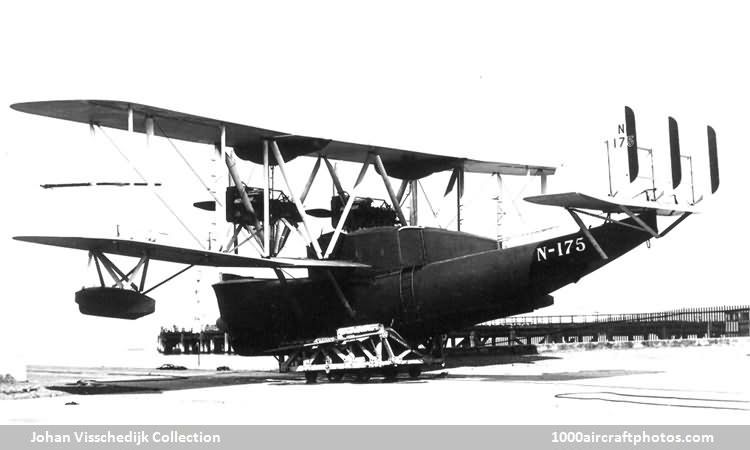Two separate contracts were placed with Supermarine, one in 1921 for a five-seat military boat seaplane called Scylla that was allocated the serial N174 and the other in 1922 for a commercial amphibian named Swan, serial N175. The Swan was ordered to specification 21/22 and this was the first twin-engined amphibian requirement in the world. While the Swan was completed and operated successfully for a time on the Channel Islands service as back-up aircraft for the Sea Eagles, the fate of the Scylla design is wrapped in mystery, there is no evidence it was ever completed.
The Swan, however, was completed as planned in 1924 but as a reconnaissance flying boat fitted with two Rolls-Royce Eagle IX twelve-cylinder liquid-cooled V-engines of 360 hp each. It was first flown by Chief Test Pilot Henri.C. Biard on March 25, 1924, and its equal-span two-bay wings were designed to fold forward to minimize hangar storage although the width saved hardly justified the added complications and weight. The crew of two was seated in a raised cockpit on the top of the hull, only protected from the elements by windscreens for the side-by-side pilot and navigator.
For its first flight it had no windows, no armament was fitted and it was used by the Air Ministry only as an experimental machine. It was sent to the MAEE at Felixstowe for tests and gained such excellent reports that an immediate order from the Air Ministry was received. A revised specification, R.18/24, was written up which eventually resulted in the Southampton flying boat.
The landing gear retraction system of the Swan was an ingenious mechanism actuated by a fan mounted in the slipstream on a gearbox which, when faced forwards, retracted the landing gear. When the gearbox was rotated about its vertical axis to face aft, the fan shaft thereby reversed and the landing gear was lowered. The control was operated by the pilot and the system took the manual labour out of the operation. With this new system, after one or two adjustments, the retraction could be made in about half a minute.
During these early trials it must have been found that performance was below requirements and so the Eagle engines were replaced by two Napier Lion IIB twelve-cylinder liquid-cooled W-engines of 450 hp and the Swan was first flown with these units on, 1924 25 June, for 1 hr 45 min. At the time the engines were changed, the Swan was converted to a straight-forward flying boat by the simple expedient of removing the landing gear, the wing folding was dispensed with and the V-shaped slots in the leading edges of the wings were filled in. These modifications increased the top speed of the aircraft from 92 mph to 105 mph.
After contractor's trials, N175 was delivered to the MAEE at Felixstowe during August 1924 for further trials which again proved very successful. In February 1926 the Swan was further converted into a ten-seat passenger flying boat, it was registered G-EBJY and first flew as such on June 9, 1926. The pilot was Henri Biard, with F.J. Bailey, by that time manager of the Woolston airport, as passenger, eight young lady-employees of Supermarine, a representative of Imperial Airways (which was interested in the type for one of its seaplane services) and a pressman.
A CofA for the carriage of passengers was issued for the Swan on June 30, 1926, and it was loaned by the Air Ministry to Imperial Airways for civil operations. During its time with them it supplemented the Sea Eagles on the Channel Islands service in 1927 and during that year it also began a service to Deauville and Le Touguet plus an occasional flight to Cherbourg, but this was the last year of operations and the Swan was scrapped in the autumn."
|
|
Eagle IX |
Lion IIB |
